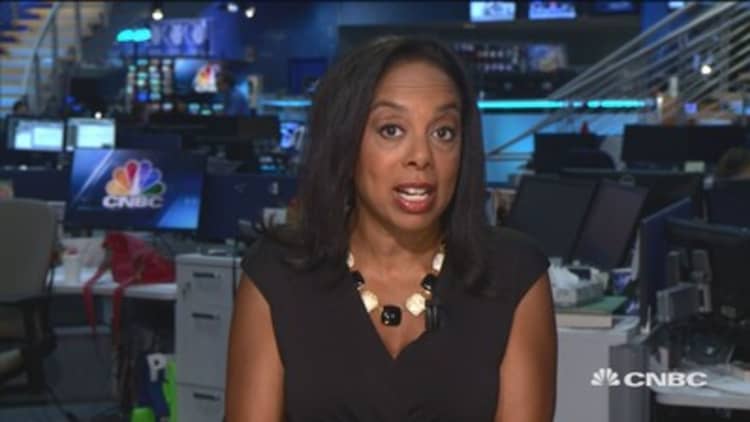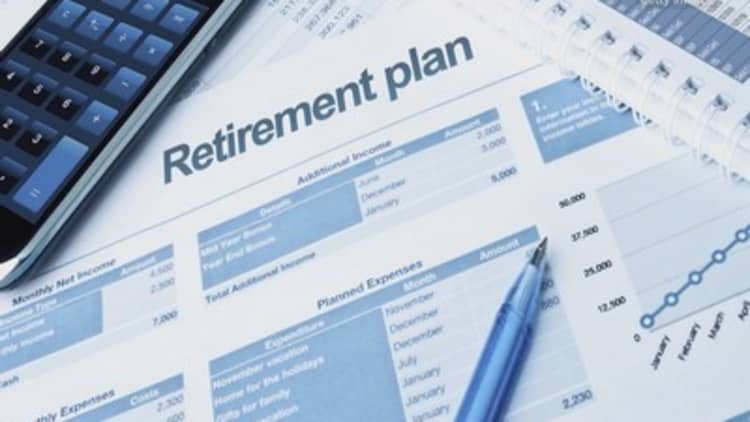
If you're enrolled in a 401(k) plan at work and put your contributions in a target-date fund, you might be wondering if it's the best option. Some financial advisors are on the fence.
"Are they perfect? Absolutely not. But nothing is," said David Mullins, a certified financial planner and owner of David Mullins Wealth Management. "But as far as simplifying the process of investing and saving for retirement, I think they meet that goal."
About 41 percent of 401(k) participants held target-date funds at the end of 2013, according to the Employee Benefit Research Institute. And many industry watchers expect their popularity to continue growing.
These funds, whose assets automatically shift into more conservative investments as you approach retirement, have become the go-to option for many workers. They also increasingly are the default option for many 401(k) plans when an enrollee does not specify investment choices.
Read MoreAre target-date funds right for you?
At year-end 2013, 71 percent of 401(k) plans included target-date funds in their investment lineup, data from the Employee Benefit Research Institute shows. Of the plans tracked by the organization, 15 percent of all assets were in target-date funds at the end of 2103.
Such funds get their names from a targeted retirement date. For instance, investors in a 2040 fund will watch their assets gradually move from riskier investments—which come with the potential for higher returns—to more conservative options, such as bonds and cash, the closer they get to 2040.
According to research firm Morningstar, assets in target-date funds—of which there are close to 600—stood at $706 billion at the end of 2014. Last year investors pumped $49 billion into these funds.
"The people who benefit the most are those who say, 'I don't know [about investing], but I know when I want to retire,'" Mullins said. "So they're basically saying, 'Handle it for me.'"
But, as Mullins and other advisors point out, these funds are imperfect.
One shortcoming is that a person's risk tolerance cannot be personalized in a target-date fund. Basically, risk tolerance boils down to whether an investor can handle stock market volatility without letting emotions cause them to make costly investing mistakes.
Read MoreMillennials must plan retirement now
Target-date funds are generally based on risk capacity. That is, how many years until investors need the money.
"Two 25-year-olds have the same risk capacity if they both don't need the money for 40 years," said Steve Burkett, a CFP with Palisade Investments. "But they might not have the same risk tolerance."
He added, "That's a challenge with [target-date] funds."
There are ways to overcome that, however. Burkett, whose firm works with 401(k) plans in an advisory capacity, said education is a big part of making people comfortable with market volatility when they have a long time until they need the money they're socking away.

But if you're an investor whose risk tolerance is low no matter what professional advice you get and you want to be in a target-date fund so your nest egg is on autopilot, you can divvy up their money.
In other words, you could put 75 percent of your 401(k) money in a target-date fund and stash the rest away in a mutual fund that has little to no exposure to the stock market.
"You also don't have to pick a target-date fund for the year you plan to retire," Burkett said. "If you're going to retire in 2055, you could, say, choose the 2035 fund."
Because the 2035 plan will be more conservative sooner, you'll automatically have less exposure to stocks much earlier than you would with the 2055 fund.
Read MoreA new way to think about risk
He added, however, that in that illustration, he'd prefer using the 2055 target-date fund for a percentage of the investor's assets and then lowering his or her risk with a bond allocation, which can be done through a 401(k) plan's stable value fund.
On the flip side, some of these funds might become too conservative too soon for investors who can stomach the risk and have the time to wait out down markets.
There are two basic types of target-date funds. In industry jargon, they are "to" and "through" funds. The "to" funds reach their most conservative point at the target date of the fund, while the "through" funds continue to seek growth for years after the date in its name.
Either way, if you want to complement your target-date fund with a bit more exposure to stocks, you can.
If you had to pick a generic medicine off the shelf that cures most colds, you'd probably pick it. That's kind of how target-date funds are.Steve Burkettcertified financial planner at Palisade Investments
"You can have the target-date fund act as your core but then put some [of your money] in mid-cap stock funds or small-cap or whatever works," said Mullins at David Mullins Wealth Management. "It can make sense … but your time horizon should be the largest factor."
One previous complaint about target-date funds—their relatively high fees—appears to be gradually disappearing.
Read MoreHow much is that mutual fund costing you?
The average target-date fund investor paid lower fees last year for the sixth year in a row, according to Morningstar. In 2014 the average expense stood at 0.78 percent, down from 0.84 percent in 2013. In 2008 that figure stood at 1.04 percent. By comparison, the average expense for all mutual funds at year-end 2014 was just above 1.2 percent, Morningstar has found.
"These funds are working despite their shortcomings," said Burkett at Palisade Investments. "If you had to pick a generic medicine off the shelf that cures most colds, you'd probably pick it," he added.
"That's kind of how target-date funds are."
—By Sarah O'Brien, special to CNBC.com




